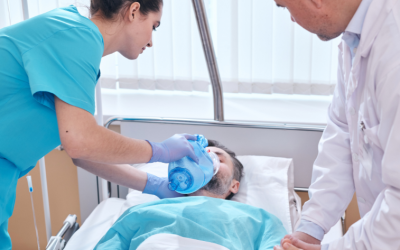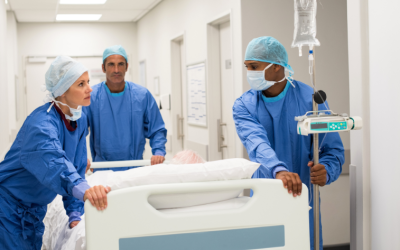Every year, millions of people have pain in their hips. However, conservative, non-invasive treatments like cortisone shots or physical therapy can help with many less severe conditions causing pain and discomfort. Read on to learn more about the process of Hip Arthroscopy Recovery.
However, other problems are harder to treat or diagnose. For example, if you have constant pain that affects your daily life and it hasn’t gone away with other treatments, you may need surgery. Here is what you need to know about hip arthroscopy surgery and recovery.
What is a Hip Arthroscopy?
Hip arthroscopy is a surgery used to fix problems with your hip. Your doctor will make a few small incisions in the skin of your hip and then put an arthroscope, a special tool, into your hip joint. The arthroscope has a camera and a light that allows your doctor to see what’s wrong with your hip. They will also put in any other small tools they need to repair damage to your bones or other tissues.
Do I Need a Hip Arthroscopy?
Hip arthroscopy is a good choice for anyone with hip pain when other treatments haven’t helped. It can also help people whose hip joints are painful, which makes it hard for them to move around.
Most of the time, your doctor won’t suggest arthroscopy until they’ve found out what’s causing your pain and tried non-surgical treatments like steroid injections or physical therapy that haven’t worked.
Conditions Hip Arthroscopy Treats
Hip arthroscopy is a good, minimally invasive surgery that can help with many problems.
Some of the most common conditions treated by hip arthroscopy are:
- Femoroacetabular impingement (FAI) – Also called “hip impingement,” an abnormally shaped hip joint causes two of your hip bones to rub against each other. Pressure makes the top of your femur (thighbone) and acetabulum (hip socket) rub against each other. FAI can affect your range of motion and cause pain
- Labral tears – Injuries to the labrum, the soft tissue covering your hip socket. A labral tear can be caused by trauma, problems with the structure of the joint, or wear and tear.
- Removing pieces of bone or cartilage – If the bones or cartilage in your hip are broken, or loose parts in your joint are causing pain, your surgeon can remove them.
- Dysplasia – A condition in which the femur doesn’t fit as well as it should with the pelvis
- Tendon tears – Your muscles attach to your bones through tendons. If you hurt your hip and the tendons tore away from the bones, your doctor can reattach them.
What to Expect After The Procedure
Most of the time, hip arthroscopy is an outpatient surgery, which means you should be able to go home the same day. After hip surgery, most people have to wear a brace for about three weeks. You’ll have to use crutches for a few weeks, and for at least a week, you won’t be able to put any weight on your hip.
Your doctor or surgeon will give you a personalized plan for getting better and talk to you about how the surgery went.
You may need to:
- Don’t put stress or weight on your hip while sleeping.
- Ice the area and elevate
- Make sure to keep the incision clean and covered.
- Over-the-counter pain medication can help with pain management after surgery.
- Until the incision heals, take showers instead of baths.
Hip Arthroscopy Recovery
Most people get better in about six weeks after having a hip arthroscopy. How long it takes you to get better depends on why you needed the surgery.
After your surgery, you’ll need crutches for a week or two, and you should be able to walk and put more weight on your hip after that.
You will also need physical therapy, which could last anywhere from a few weeks to a few months. In about 12 weeks, you should be able to go back to heavy exercise and/or sports, however, every patient is different and you should speak with your surgeon about a specific recovery time.
What is The Cost of The Procedure?
How much hip arthroscopy surgery costs depends on several things. Estimates range from about $4,000 to just over $8,000. The best way to get a reasonable estimate is to talk to your insurance company. The final cost will depend on your insurance coverage, out-of-pocket maximum, and deductible. In the price, anesthesia, imaging, lab tests, surgery, and a hospital stay are all included, and you may get different bills from each of these companies. Here at TOC, we accept most insurance company providers.
How to Prevent Future Hip Injuries
About 85% to 90% of people who have arthroscopic hip surgery are happy with the results. The operation is done to help restore the function of your hip, but it works best to relieve pain. Most of the time, it’s hard to use the hip the same way before, but it can be done. Many patients can return to activities and sports they love, from hiking to football.
Whether you can get back to the level of function you had before will depend on the following:
- The amount of damage to the hip
- How well it heals
- Your rehabilitation success
- How hard do you want your sports or work to be
If you are careful with your hip, you can help prevent more injuries in the future. Don’t push yourself too much, and strengthen the muscles around your hip to help support your future movements.
Is your hip bothering you? Have you tried other treatments for your hip pain and can’t seem to find relief? Our team of doctors here at TOC is ready to help you. Please give us a call at (865)690-4861 to set up your appointment and start your journey back to a comfortable life.




